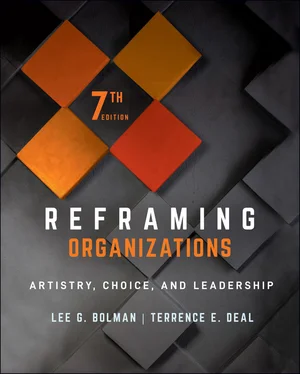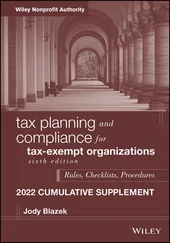So much talent and experience, yet key decision makers were at sea. They misread available information and failed to act or did the wrong thing. The technical term is cluelessness , a pervasive affliction for leaders everywhere. Being clueless simply means that you don't really know what's going on and don't see better options even if they are close at hand. So, you continue down the wrong thoroughfare, hoping in vain that it will get you where you want to go. Your efforts to make things better make them worse, which is often obvious to those around you even if not to you.
How do leaders become clueless? That is what we explore next. Then we introduce reframing—the conceptual core of the book and our basic prescription for escaping the common and debilitating curse of being at sea without any landmarks to indicate whether you are on course. Reframing requires an ability to think about situations from more than one angle so that you can develop alternative diagnoses and strategies. We introduce four distinct lenses for sizing things up—structural, human resource, political, and symbolic—each logical and powerful in capturing a detailed snapshot. Together, they help to paint a more comprehensive picture of what's going on and what to do.
VIRTUES AND DRAWBACKS OF ORGANIZED ACTIVITY
There was little need for professional managers when individuals mostly managed their own affairs, drawing goods and services from family farms and small local businesses. Since the dawn of the industrial revolution some 200 years ago, explosive technological and social changes have produced a world that is far more interconnected, frantic, and complicated. Humans struggle to avoid drowning in complexity that continually threatens to pull them in over their heads (Kegan, 1998). Forms of management and organization effective a few years ago are now obsolete. Sérieyx (1993) calls it the organizational big bang:
The information revolution, the globalization of economies, the proliferation of events that undermine all our certainties, the collapse of the grand ideologies, the arrival of the CNN society which transforms us into an immense, planetary village—all these shocks have overturned the rudimentary rules of the game and suddenly turned yesterday's organizations into antiques. (pp. 14–15)
The demands on managers' wisdom, imagination, and agility have never been greater, and the impact of organizations on people's well‐being and happiness has never been more consequential. The proliferation of complex organizations has made most human activities more formalized than they once were. We grow up in families and then start our own. We work for business, government, or nonprofits. We learn in schools and universities. We worship in churches, mosques, and synagogues. We play sports in teams, franchises, and leagues. We join clubs and associations. Many of us will grow old and die in hospitals or nursing homes. We build these enterprises because of what they can do for us. They offer goods, entertainment, social services, health care, and almost everything else that we use or consume.
All too often, however, we experience a darker side of these enterprises. Organizations frustrate and exploit people. Too many people find that work has so little meaning that jobs offer nothing beyond a paycheck. Too often, products are flawed, families are dysfunctional, students fail to learn, patients get worse, and policies backfire. A cruel irony of the Covid‐19 panic was that nursing homes meant to protect and prolong life often became death traps for their residents. If we believe mission statements and public pronouncements, almost every organization these days aims to nurture its employees and delight its customers. But many miss the mark. Schools are blamed for “mis‐educating,” universities are said to close more minds than they open, and government is criticized for corruption, red tape, and rigidity.
The private sector has its own problems. Manufacturers recall faulty cars, defective airplanes, or inflammable cell phones. Producers of food and pharmaceuticals make people sick with tainted products. Software companies deliver bugs and “vaporware.” Industrial accidents pump chemicals, oil, toxic gas, and radioactive materials into the air and water. Corporate greed, incompetence, and insensitivity wreak havoc on communities and individuals. The ill‐fated bottom line: we seem hard‐pressed to manage organizations so that their virtues exceed their vices. The big question: Why?
Management's Track Record
Year after year, the best and brightest managers maneuver or meander their way to the apex of enterprises great and small. Then they do really dumb things. How do bright people turn out so dim? One theory is that they're too smart for their own good. Feinberg and Tarrant (1995) label it the “self‐destructive intelligence syndrome.” They argue that smart people often act stupid because of personality flaws—things like pride, arrogance, and an unconscious desire to fail. It's true that psychological flaws have been apparent in brilliant, self‐destructive individuals like Bill Clinton and Donald Trump. But on the whole, the best and brightest have no more psychological problems than everyone else. The primary source of cluelessness is not personality or IQ but a failure to make sense of complex circumstances. If we misread a situation, we'll do the wrong thing. But if we don't discern that we're seeing the wrong picture, we won't understand why we're not getting the results we want. So, we insist we're right even when we're off track. America endured a two‐month version of this drama when Donald Trump erroneously insisted that he had won an election he had lost by seven million votes.
Vaughan (1995), in trying to unravel the causes of the 1986 disaster that destroyed the Challenger Space Shuttle and its crew, underscored how hard it is for people to surrender their entrenched conceptions of reality:
They puzzle over contradictory evidence, but usually succeed in pushing it aside—until they come across a piece of evidence too fascinating to ignore, too clear to misperceive, too painful to deny, which makes vivid still other signals they do not want to see, forcing them to alter and surrender the world‐view they have so meticulously constructed. (p. 235)
We create our own psychic prisons and then lock ourselves in and toss away the key. This helps explain a number of unsettling reports from the managerial front lines:
Hogan, Curphy, and Hogan (1994) estimate that the skills of one‐half to three‐quarters of American managers are inadequate for the demands of their jobs. Gallup (2015) puts the number even higher, estimating that more than 80 percent of American managers lack the capabilities they need. But most probably don't realize it: Kruger and Dunning (1999) found that the less competent people are, the more they overestimate their performance, partly because they don't know good performance when they see it.
About half of the high‐profile senior executives that companies hire fail within two years, according to a 2006 study (Burns and Kiley, 2007).
Year after year, management miscues cause once highly successful companies to skid into bankruptcy. In 2019, a year of economic expansion and a rising stock market, more than 50 major companies went bankrupt. Among the best known were Pacific Gas and Electric (the California utility giant, which has filed for bankruptcy twice in this century) and Purdue Pharma (brought down by lawsuits over its pushing hundreds of thousands of users into opioid addiction). (The pandemic of 2020 brought a new wave of bankruptcies, but not all of them were necessarily the fault of management.)
Small wonder that so many organizational veterans nod in assent to Scott Adams's admittedly unscientific “Dilbert principle”: “the most ineffective workers are systematically moved to the place where they can do the least damage—management” (1996, p. 14).
Читать дальше

![Lee Jungmin - Хвала Орку 1-128 [некоммерческий перевод с корейского]](/books/33159/lee-jungmin-hvala-orku-1-thumb.webp)










